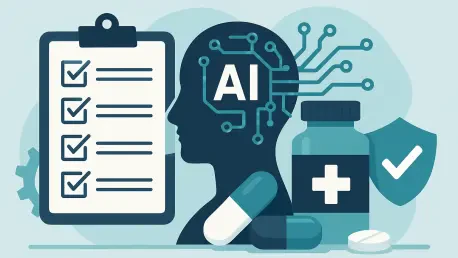The pharmaceutical industry stands on the brink of a technological revolution with the recent release of the Good Automated Manufacturing Practice (GAMP) Artificial Intelligence Guide by the International Society for Pharmaceutical Engineering (ISPE). As pharmaceutical companies increasingly turn to artificial intelligence to boost efficiency and innovation, there is a pressing need to ensure these advancements do not compromise patient safety or product quality. This guide aims to address this challenge head-on by providing best practices for integrating AI-enhanced computer systems while maintaining strict compliance with Good Practice (GxP) regulations. By aligning with existing standards such as ISO and laws governing AI use in medical devices, the guide serves as an essential resource for a diverse audience comprising drug developers, suppliers, and regulators. Through a comprehensive examination of AI system design and operational principles, it ensures that these technologies adhere to global compliance standards.
Key Features of the GAMP AI Guide
One pivotal element of the GAMP AI Guide is its focus on quality risk management, which is crucial in an industry where even minor errors can have catastrophic consequences. Understanding the balance between innovation and risk is vital. The guide details various methodologies for evaluating and mitigating risks associated with AI implementation, ensuring that new technologies enhance rather than jeopardize pharmaceutical outcomes. By setting forth clear principles, it helps organizations navigate complex regulatory environments while innovating responsibly. Supplier roles in compliance are emphasized, illustrating how robust partnerships between pharmaceutical firms and technology providers can further advance regulatory adherence. The guide stresses the importance of selecting suppliers with robust frameworks in place, which can significantly facilitate the compliance process. By leveraging strong governance frameworks, the guide helps manage risks and uphold data integrity, crucial for validating AI-enhanced systems that can transform drug development and manufacturing processes.
In addition to these concepts, the guide’s appendices provide accessible, action-oriented guidance for practical application within an organization’s existing systems. This ensures that theoretical frameworks are translated into achievable, day-to-day operational strategies. Furthermore, the guide’s extensive coverage of compliance with global regulations, including those by the US FDA and UK MHRA, as well as the European AI Act, underscores its comprehensive scope. By categorizing AI applications from varying regulatory perspectives, it provides a holistic view on safeguarding safety and maintaining product quality. This prospective approach enables teams to proactively address potential compliance issues before they arise. Through these detailed sections, the GAMP AI Guide positions itself as a cornerstone for organizations looking to implement AI technologies responsibly, without compromising on vital regulatory requirements.
Driving Forward Governance and Practical Implementation
Brandi Stockton, alongside industry leaders such as Taylor Chartier, CEO of Modicus Prime, has spearheaded this initiative. Their collaborative efforts reflect the pharmaceutical industry’s growing demand for actionable strategies in regulated areas, catering to professionals seeking to responsibly implement AI-driven solutions within their operations. Stockton’s leadership and ability to form a diverse team exemplify the industry’s shift towards embracing innovation while maintaining uncompromising safety standards. This forward-thinking guide does not merely offer insight but paves the way for tangible advancements in pharma compliance. By enabling professionals to adapt to emerging trends and technological shifts, the guide plays a critical role in enhancing workflow efficiency and product safety.
ISPE’s ongoing initiatives, including prior publications like Validation 4.0, have set a precedent for equipping professionals with necessary tools to navigate the ever-changing landscape of pharmaceutical manufacturing. This cohesive approach strategically prepares organizations to integrate cutting-edge technologies while maintaining rigorous safety and quality controls. The development and release of the GAMP AI Guide reflect a thoughtful response to the industry’s evolving needs, portraying a steadfast commitment to innovative yet responsible technological transformation. It stands as both a comprehensive reference and a visionary guide, ensuring that the future of pharmaceuticals remains aligned with high standards of patient safety and data integrity.
Toward a Responsible and Innovative Future
The pharmaceutical industry is on the verge of a major technological transformation with the introduction of the Good Automated Manufacturing Practice (GAMP) Artificial Intelligence Guide by the International Society for Pharmaceutical Engineering (ISPE). As pharmaceutical firms increasingly incorporate artificial intelligence to enhance efficiency and drive innovation, it’s crucial to ensure these developments do not compromise patient safety or product quality. This guide tackles this crucial issue by offering best practices for integrating AI-enhanced computer systems while ensuring strict adherence to Good Practice (GxP) regulations. It aligns with current standards, including ISO, and laws governing AI application in medical devices, making it an invaluable resource for a wide audience of drug developers, suppliers, and regulatory bodies. By thoroughly examining AI system design and operational principles, it guarantees that these technologies are compliant with global standards, thereby supporting the safe and effective use of AI in pharmaceuticals.









